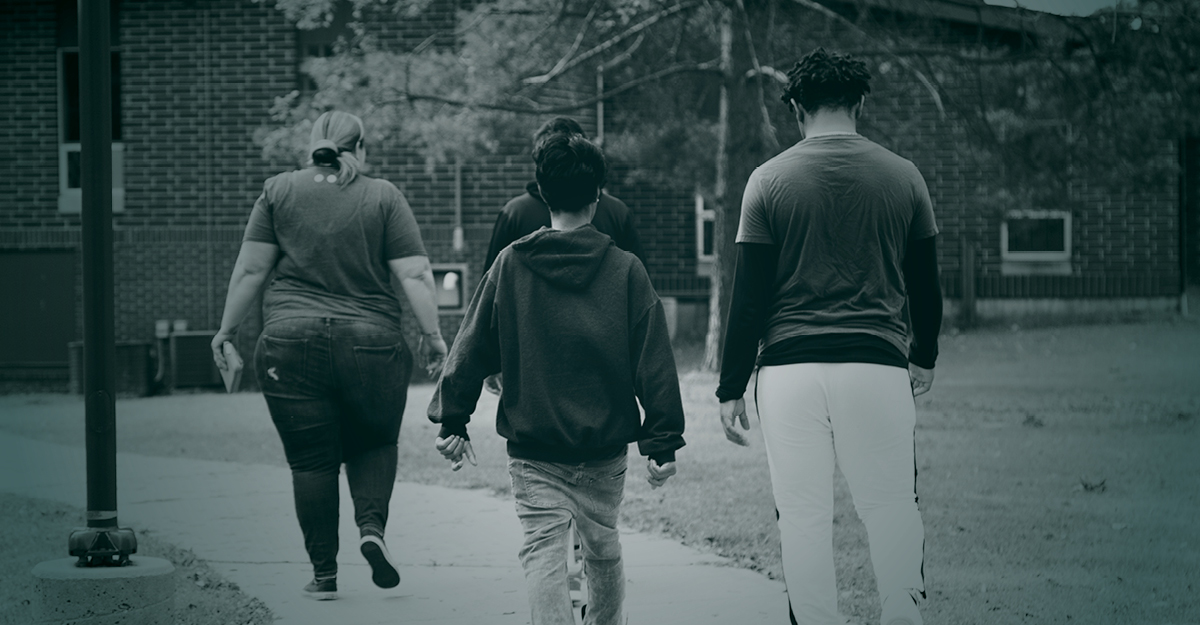Screens, constant digital notifications, repeated stimuli, raucous crowds, loud sounds — all of these can trigger sensory overload in kids, teens and adults alike.
As Ellipsis’ chief clinical officer Nikki Thomson noted, the organization has seen an increase in kids and teens experiencing sensory processing issues. Unfortunately, symptoms of sensory processing disorder can be misinterpreted as behavioral issues.
So what is sensory processing disorder, and what can parents, caregivers, educators and others do to help? Here is some information to help recognize the signs and what you can do about it.
What is sensory processing disorder?
Though not officially recognized as a psychiatric diagnosis, sensory processing disorder describes the set of issues or difficulties kids and teens may be experiencing while trying to process information from their five senses: sight, sound, smell, taste and touch. They may find that one particular sense, like loud noises, are triggering. Or they may be easily overwhelmed trying to process multiple sensory inputs at once.

Who experiences sensory processing issues?
Some experts believe up to 10% of kids experience some sensory processing difficulties. Kids and teens on the autism spectrum disorder and those with attention deficit disorders are more likely to experience sensory processing disorder or related issues.
What are the symptoms of sensory processing disorder?
As mentioned, kids and teens with sensory processing issues may seem like they are lashing out or exhibiting negative behaviors.
“We might see a kid who is throwing something or yelling, and those seem like behavioral issues. Really, they may be dysregulated, overwhelmed and need a quiet space to calm down.”
Nikki Thomson, Chief Clinical Officer
Here are some signs that a child in your life may be experiencing sensory processing disorder.
- Lights are too bright.
- Experiencing multiple senses in a heightened way at once. For example, they say they can “hear the lights buzzing.”
- Clothing that is too scratch, itchy or uncomfortable.
- Sounds are too loud.
- Soft touches and physical affection like a hug feel too hard or uncomfortable.
- Extremely sensitive to food textures.
- Poor balance, clumsiness or incoordination.
- Inability to sit still.
- Can’t handle the noises and feelings of being in a crowd.
- Overly sensitive to smells.
What causes sensory processing disorder?
There isn’t one known cause for sensory processing issues.
“Regardless of what causes sensory processing issues, we have found it very helpful to give kids space to calm down, fidgets, and other tools to soothe themselves.”
Nikki Thomson, Chief Clinical Officer
“Other tactics that we’ve been using to prevent issues from arising is having kids gather in smaller groups and in quieter spaces to keep them regulated.”
What to do if you believe a child or teen is experiencing sensory processing disorder?
The first step would be to contact a youth services and mental health provider like Ellipsis so the organization and experts can make an assessment, if necessary, and connect you to therapy options that help.
In the meantime, there are still many supports that help ground kids and teens who may be experiencing an episode of sensory overload. Weighted blankets and fidget toys are great options that help refocus someone’s sensory system. Coping mechanisms like deep breathing, counting, and grounding oneself to their surroundings and body by patting their head, chest, arms, etc., can also help.
Ellipsis and our team of behavioral and mental health specialists are ready to help kids and teens in our community pause, reset and reach their goals through a variety of supports. Reach out at EllipsisIowa.org.
